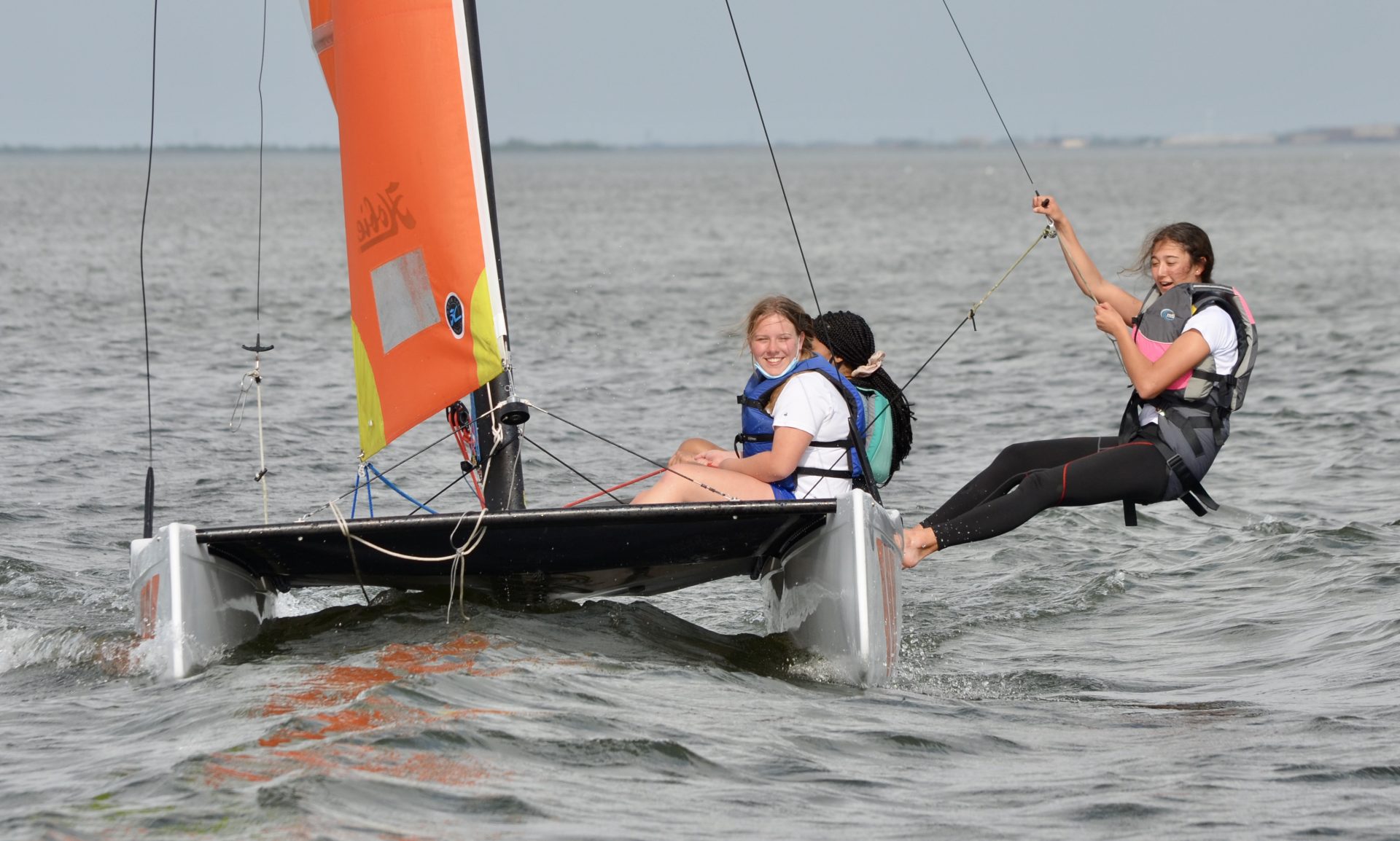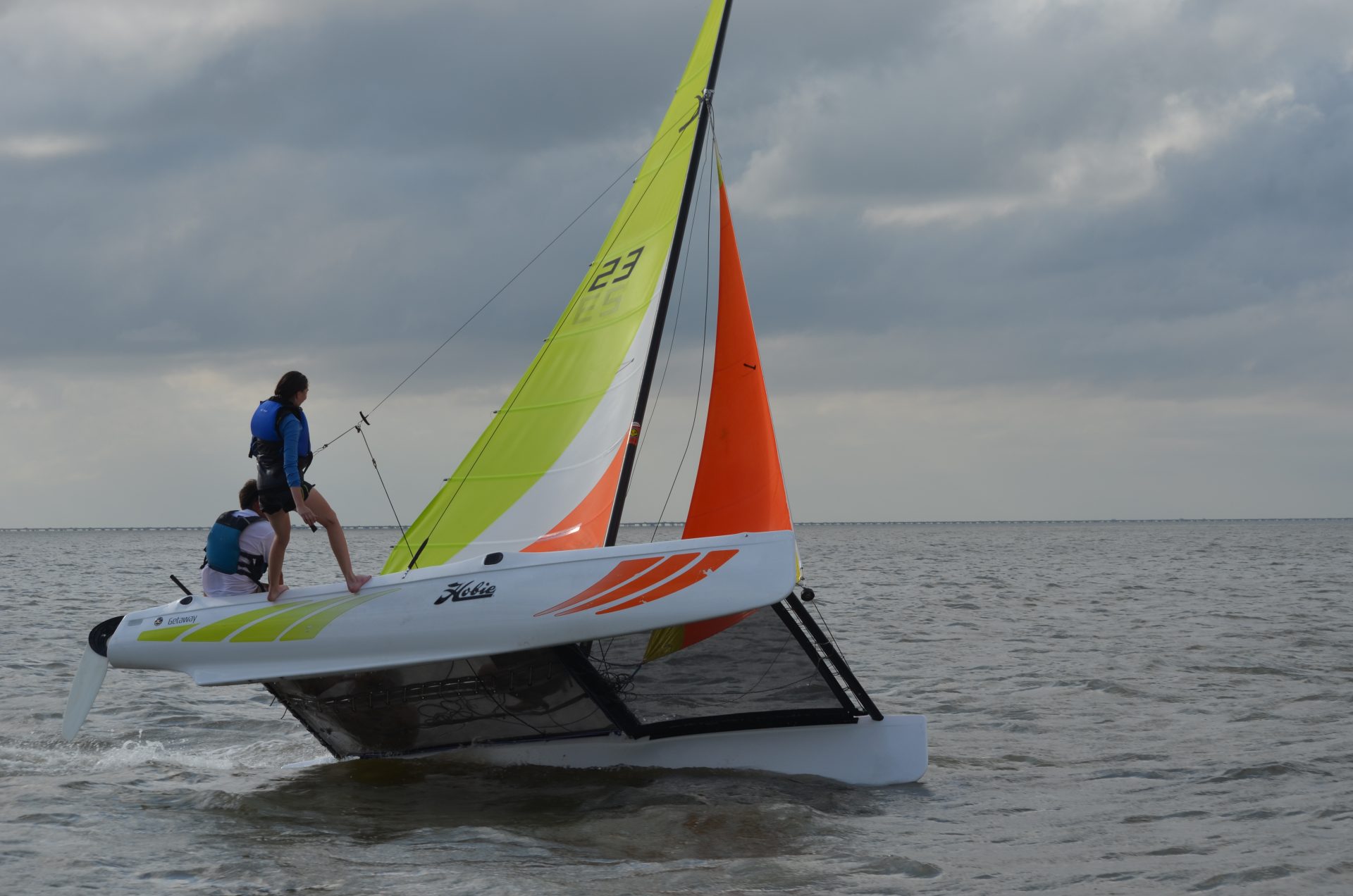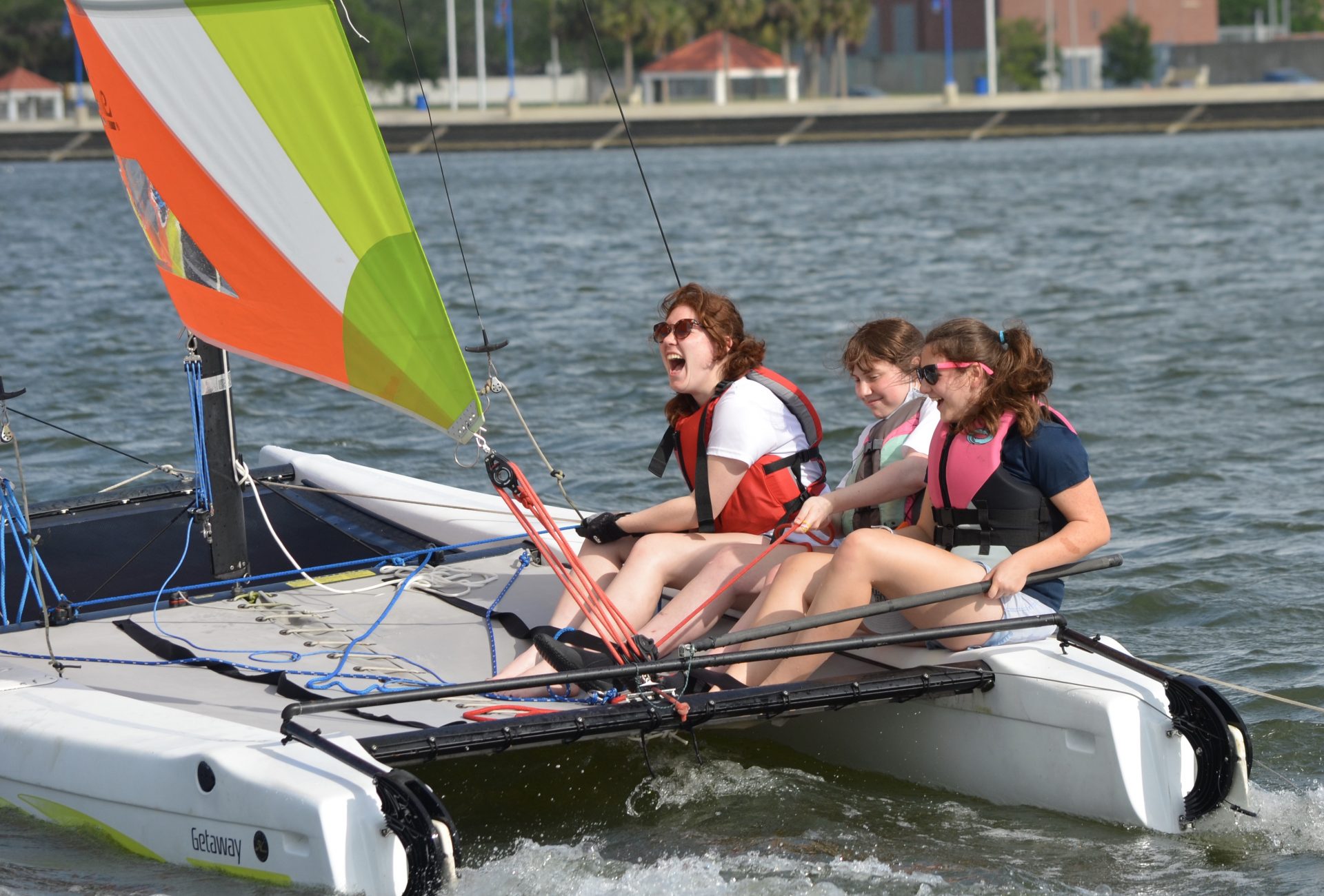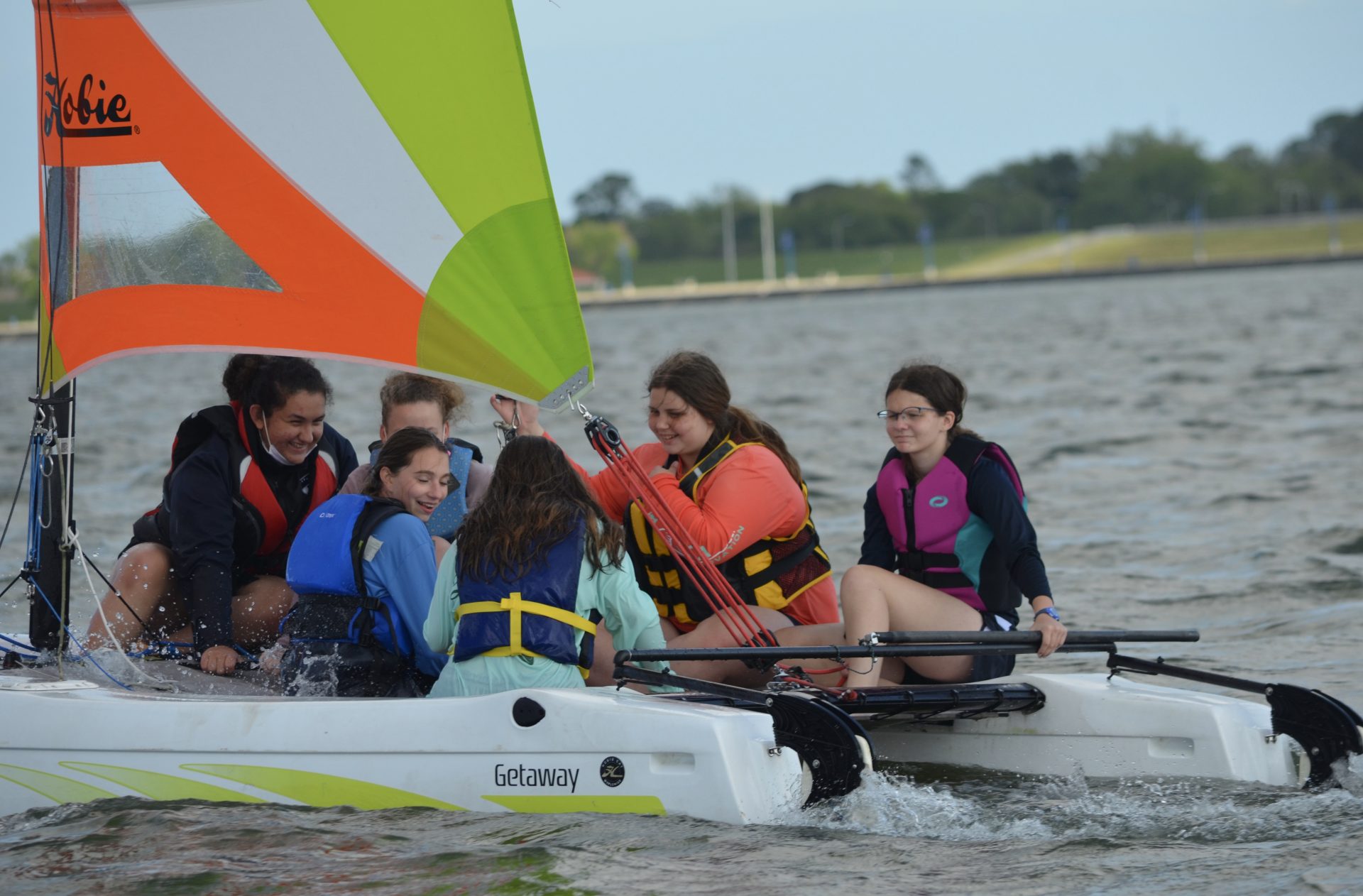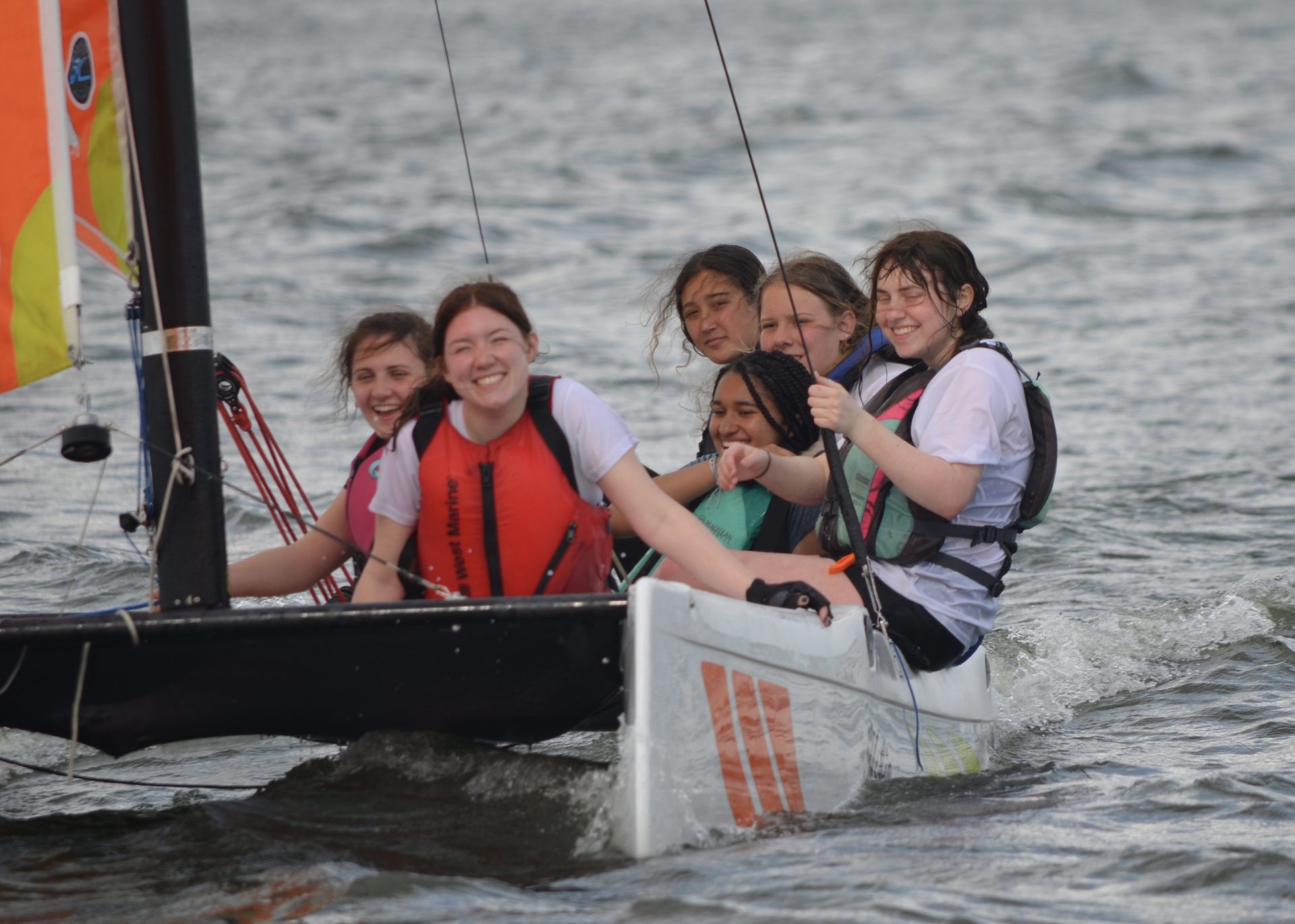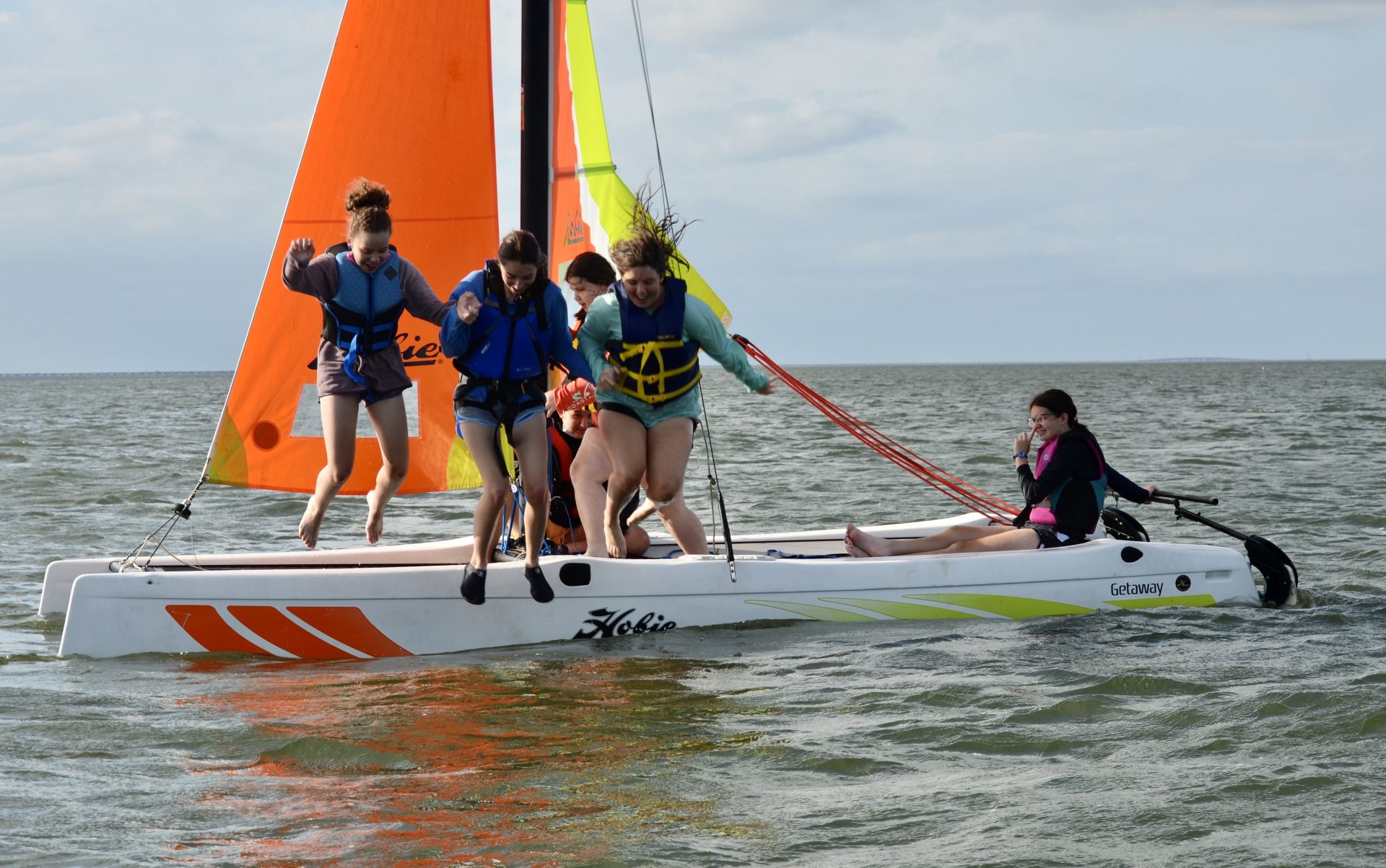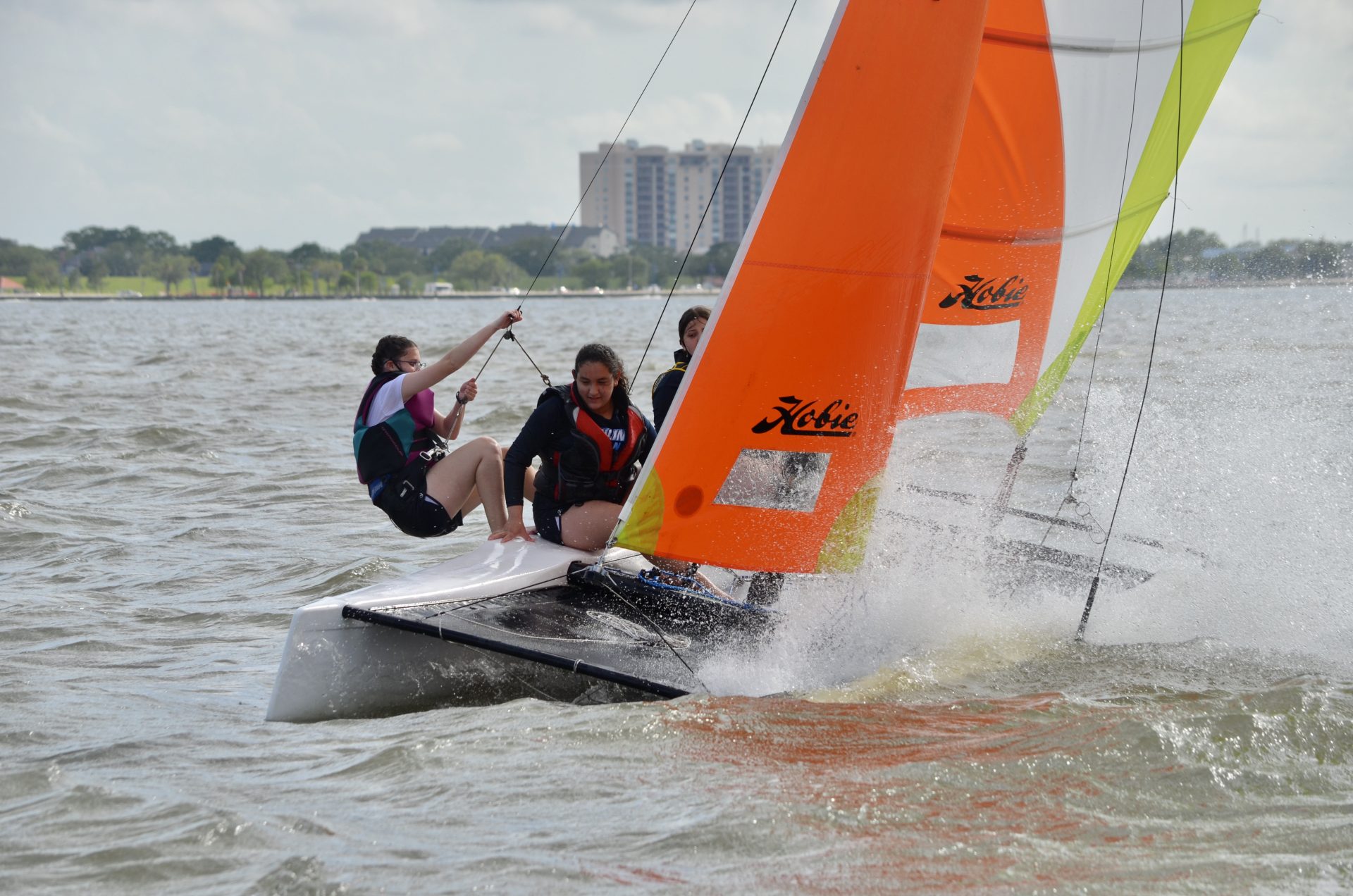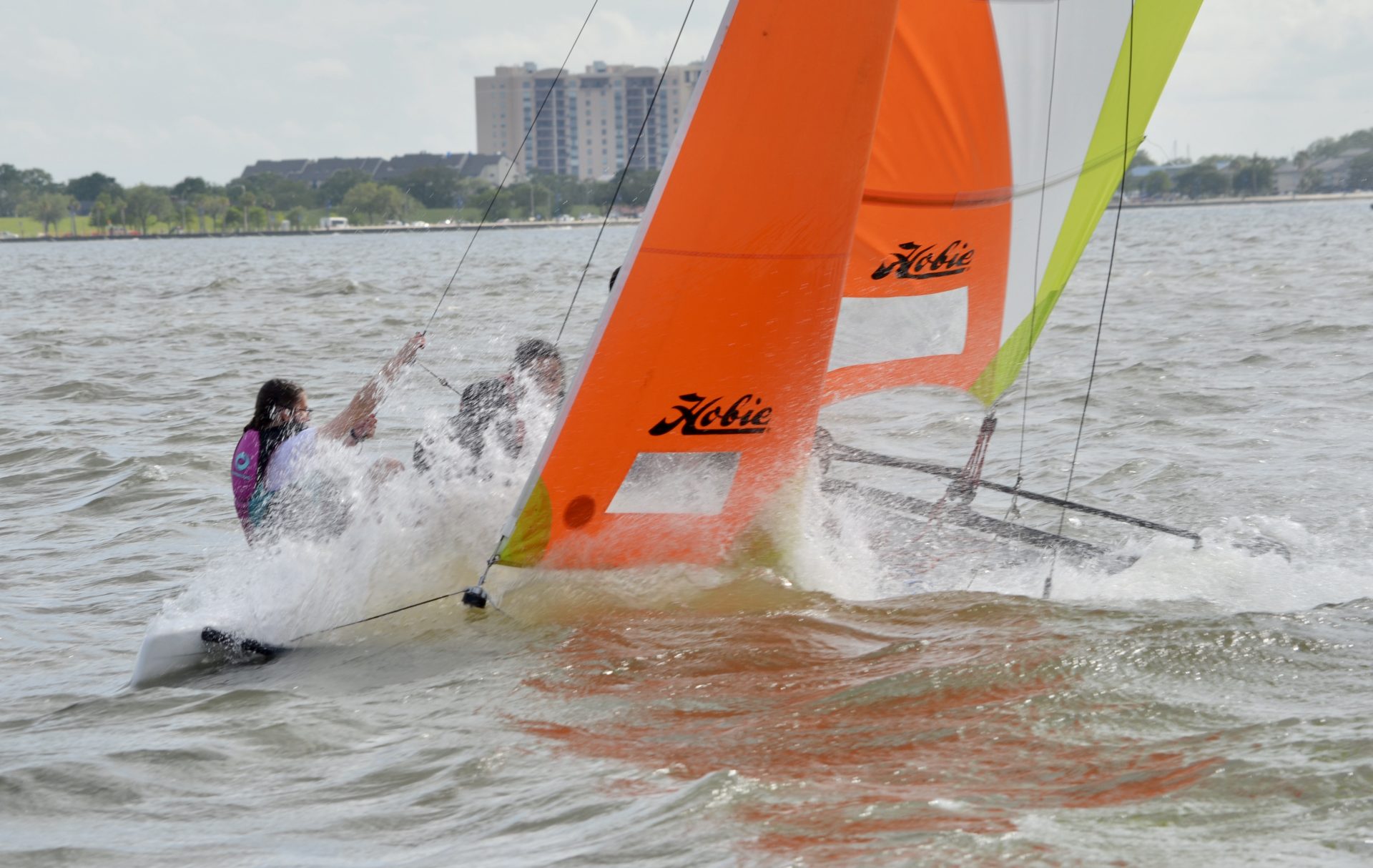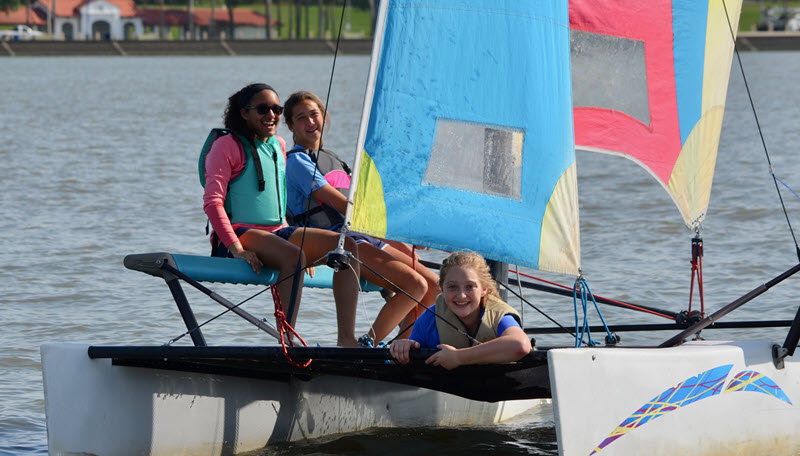
by Kevin Gunn
Over the last ten years, I have been fortunate enough to coach the Ursuline Academy high school sailing team in New Orleans, LA. We are recognized as a varsity sport at the all-girls school and have a pretty full practice and regatta schedule throughout the entire school year.
As is the case with teams for any sport, the 25 or so members of the Ursuline sailing team form a pretty close bond. After all, they spend a lot of time together practicing all the skills that go along with competing in two person dinghies.
While they enjoy sailing in 420s and the occasional FJ over the course of the long season, they most enjoy the very end of the season when they get to venture into the non-traditional high school boats.
Our district championship regatta is typically held in early April, and the school year ends at the end of May. We don’t cancel our practices after we fail to qualify for Nationals; we just shift out focus to having fun sailing!
We make available all of the New Orleans Yacht Club fleet which includes a Viper, Flying Scot, and small keelboats. As a catamaran enthusiast, I also offer my Hobie Getaway. The team members enjoy sailing all the boats offered, but the Hobie is by far their favorite. Here is why:
They are fast and wet
There is no greater thrill than to see the excitement on a kid’s face when they experience the speed of a beach cat. At the first wave, plug your ears because as the water splashes up through the tramp the kids will start screaming with joy. For kids that don’t have access to high performance boats, a beach cat is the fastest sailboat they will sail. What kid wouldn’t want to sail fast?
They are easy to sail and social
Compared to other sailboats of comparable performance, they are incredibly easy to rig and sail. Kids receive instruction constantly, whether it is at school, yacht club junior programs, high school sailing practice, etc. However, when they sail the Hobie, I point out how the traveler works instead of having a vang, give a few pointers on how to tack, and then turn them loose.
Less rigging time and instruction ashore means more time sailing with their friends. Speaking of sailing with friends, the rotomolded cats such as the Hobie Wave, Hobie Getaway, or RS Sailing cats have significantly more hull volume of the cats of old. They can sail with a surprising number of kids aboard.
From their perspective, the catamaran is a party boat compared to the crew of two they are used to sailing with. With the simplicity in sailing and stable platform, the kids get to socialize in a way they would not be able to do when they are focused on just keeping the boat upright and in control.
They are relatively stable
In addition to coaching a high school team, I have also worked several summers at a sleep-away camp that has a fleet of Hobie Waves. On those days when it is blowing 20 mph, we could still let kids with very little experience go on the Waves. They can still capsize, but not at nearly the same rate as the monohull dinghies.
The lack of a boom also seriously reduces the risk of injury. As an instructor of novice sailors on a windy day, I have much less to worry about when the kids are sailing small rotomolded cats as opposed to any monohull dinghy. In short, novice sailors get the thrill of sailing without fear on a windy day.
They are durable and affordable
Aside from rotomolded hulls being more durable than fiberglass (I have never had to repair a rotomolded hull after a boat collision), the catamarans also have far fewer parts, which means far fewer parts to replace when they break.
No rubber universal joint on the tiller extension, no centerboard gaskets to deal with, no boom (or boom vang), etc. The sails also have a much longer useful life than most monohull dinghies because catamaran sails have full battens, which keep the sails from flogging like other sails.
If purchasing new boats, at under $7,000, a new Hobie Wave is significantly less than a new 420 and is sure to last longer.
Conclusion
Competing on a racing team gives its members a reason to come to practice and to continue their development as young sailors, so for that reason, I am all in for training kids interested in racing for how to be competitive sailors. However, if high school sailing, or junior sailing in general, shifted its racing to small rotomolded catamarans, I would jump on board for all the reasons mentioned above.
Since that is likely not going to happen any time in the foreseeable future, let’s at least expose the next generation of sailors to the joys of catamaran sailing. It is sure to put a smile on a kid’s face.
Editor’s note: We echo Kevin’s sentiment, but expand it further for the next generation of sailors to be aware of all the options in the sport. As great an experience scholastic sailing offers at the high school and college level, it is a segment of the sport that ends with the diploma. The sooner young people find what they can enjoy in the sport as adults, the more likely they are to stay in the sport beyond the school years.
More photos of the Ursuline Academy high school sailing team:
